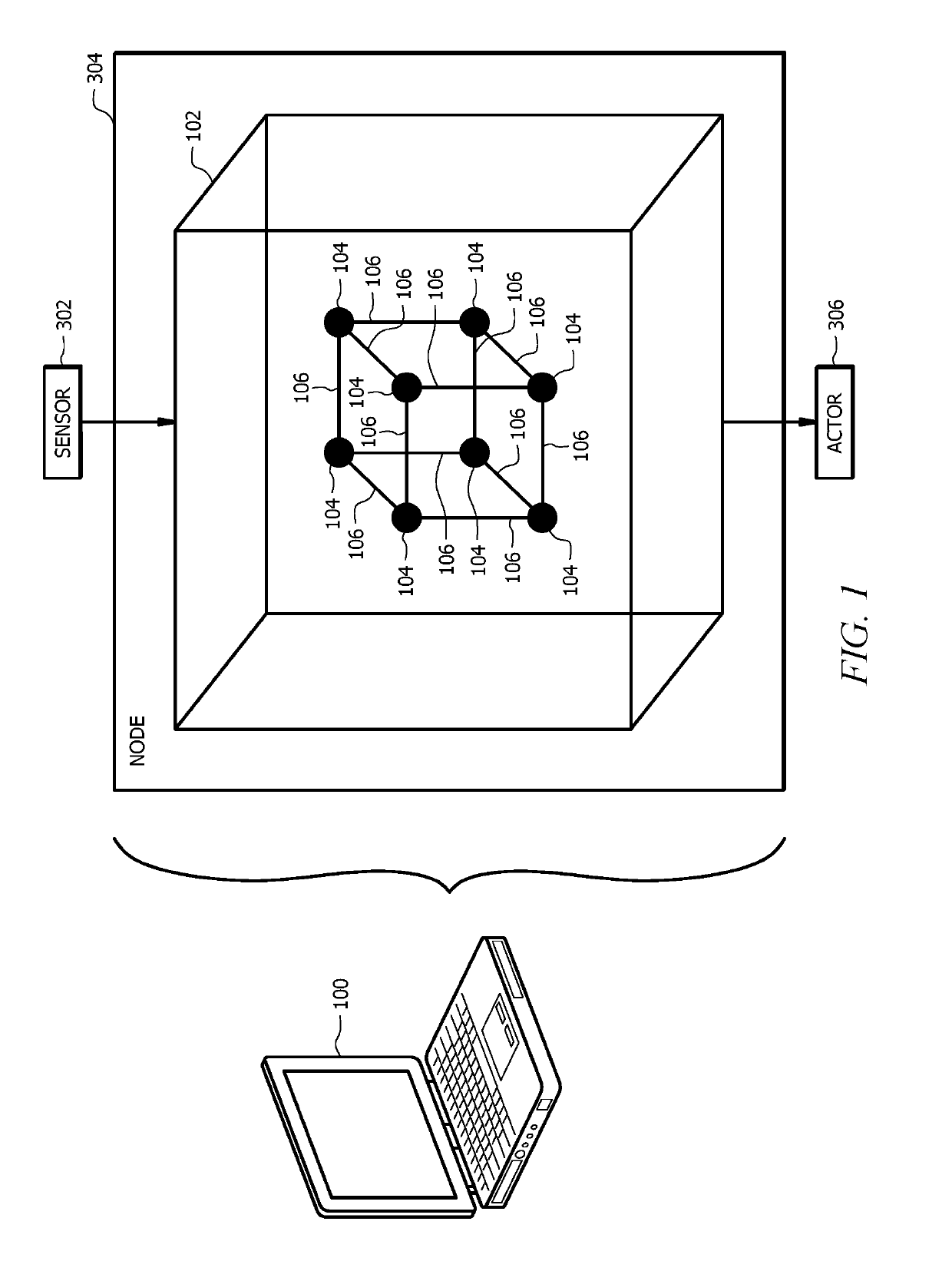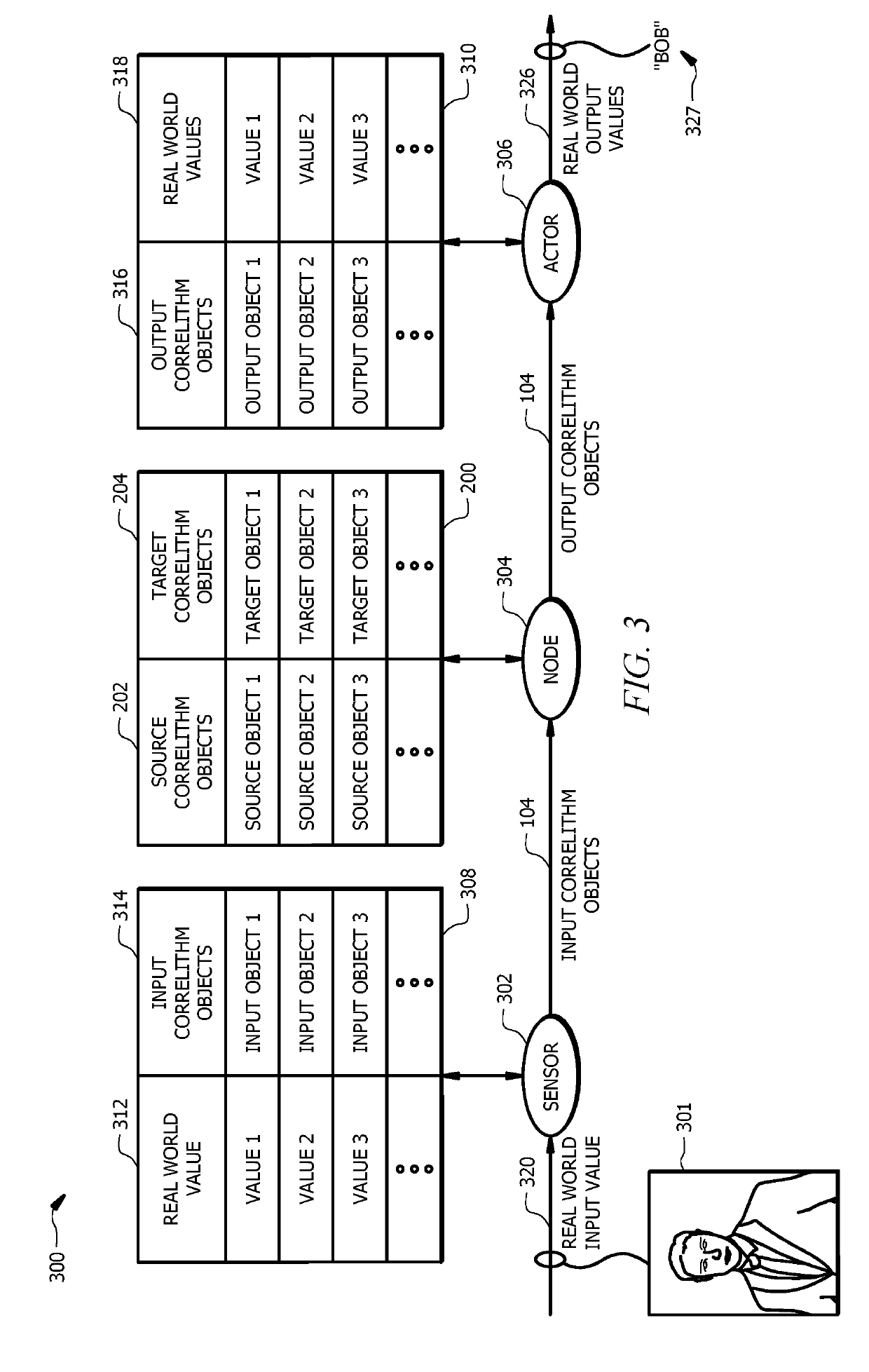Computer architecture for emulating a correlithm object processing system that uses portions of correlithm objects and portions of a mapping table in a distributed node network
a processing system and computer architecture technology, applied in computing, electric digital data processing, instruments, etc., can solve the problems of complex processes, inability to tell if a data sample matches or is similar to any other data sample, and conventional computers are unable to use ordinal numbers by themselves, so as to improve the operation of the device
- Summary
- Abstract
- Description
- Claims
- Application Information
AI Technical Summary
Benefits of technology
Problems solved by technology
Method used
Image
Examples
Embodiment Construction
[0031]FIGS. 1-5 describe various embodiments of how a correlithm object processing system may be implemented or emulated in hardware, such as a special purpose computer. FIG. 1 is a schematic view of an embodiment of a user device 100 implementing correlithm objects 104 in an n-dimensional space 102. Examples of user devices 100 include, but are not limited to, desktop computers, mobile phones, tablet computers, laptop computers, or other special purpose computer platform. The user device 100 is configured to implement or emulate a correlithm object processing system that uses categorical numbers to represent data samples as correlithm objects 104 in a high-dimensional space 102, for example a high-dimensional binary cube. Additional information about the correlithm object processing system is described in FIG. 3. Additional information about configuring the user device 100 to implement or emulate a correlithm object processing system is described in FIG. 5.
[0032]Conventional comput...
PUM
 Login to View More
Login to View More Abstract
Description
Claims
Application Information
 Login to View More
Login to View More - R&D
- Intellectual Property
- Life Sciences
- Materials
- Tech Scout
- Unparalleled Data Quality
- Higher Quality Content
- 60% Fewer Hallucinations
Browse by: Latest US Patents, China's latest patents, Technical Efficacy Thesaurus, Application Domain, Technology Topic, Popular Technical Reports.
© 2025 PatSnap. All rights reserved.Legal|Privacy policy|Modern Slavery Act Transparency Statement|Sitemap|About US| Contact US: help@patsnap.com



